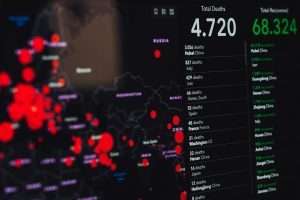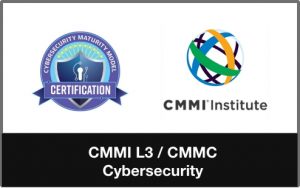Magnus Management Group is committed to sharing knowledge by contributing easy to read articles and whitepapers on a variety of topics. Feel free to download and share the same.
.
- Quantum-resistant cryptographyQuantum-resistant cryptography refers to the study and development of cryptographic methods that can resist attacks by quantum computers. These computers use the principles of quantum mechanics to perform certain types of calculations much faster than classical computers, which poses a significant threat to current encryption methods. Most of the widely used encryption algorithms, such as RSA and Elliptic Curve Cryptography, rely on the difficulty of factoring large numbers or computing discrete logarithms. These problems are known to be solvable in polynomial time on a quantum computer, which means that these algorithms could be easily broken by a sufficiently powerful quantum computer. Quantum-resistant cryptography, on the other hand, relies on mathematical problems that are believed to be hard even for quantum computers.
- Quantum Computing and its Impact on CybersecurityQuantum computing’s ability to solve complex problems that are beyond the capabilities of the traditional computer renders it exceptional. While the quantum research community applauds the accelerated rate at which quantum computers are being developed; it is also a threat considering it can unravel the algorithms behind the encryption keys that protect the assets we hold most dear (like our data and the internet’s infrastructure). It is estimated that within the next 3-5 years quantum computers will be able to break a 2048-bit number. This remarkable breakthrough continues to erode the timeline, demonstrating the hastening approach of a new paradigm… Read more: Quantum Computing and its Impact on Cybersecurity
- Digital Dominance – Using Data as a Tactical Advantage. Digital dominance is all about using data as a tactical advantage in this new world of cyber actions and defense. Data, its management, analysis and reporting are the key towards maintaining the tactical edge in any organizational posture. Irrespective if the application is civilian or military in nature, digital dominance is at the core of a successful enterprise, homeland security and military force projection. In the case of homeland security and military the digital dominance can serve as a significant force multiplier in both defense and offensive measures. . Data is being generated at an incredible pace from within… Read more: Digital Dominance – Using Data as a Tactical Advantage
- Supply Chain Cybersecurity White PaperSupply Chain Cybersecurity includes a complex of everyday operating issues affected by a network of known and unknown connections, services and components. This paper provides a strategic overview of the supply chain cyber issues from the perspective of vendor operational security. . We examine the accelerating escalation of supply chain risks, leading to 2021 executive orders and vendor cyber certification requirements. Concise recommendations and links to frameworks and self-assessment resources provide a starting point for the journey to healthier supply chain . Co Authored By Maria Horton and Shivaji Sengupta who both serve on the AFCEA International Homeland Security Committee.… Read more: Supply Chain Cybersecurity White Paper
- Information that could compromise your cyber security postureThe open government data movement began fully maturing in early 2009, at a time when government(s) and society began to truly realize the beneficial value of government data; and open standards were taking root as drivers of innovation. The thrust of this movement was to identify all valuable Government data sets, and to require agencies to make them available to the public, at no cost, and in open-standard formats that ordinary citizens and enterprises could easily access and leverage. These key principles were enshrined in the Data.gov initiative, established in May 2009, by, then-Federal Chief Information Officer (CIO) of the… Read more: Information that could compromise your cyber security posture
- Why is CMMI Level 3 Relevant for Cybersecurity?Maturity models have been around for more than three decades, as early as the 1980s. The original intent of the Capability Maturity Model (CMM) was to assess the United States Department of Defense (D.O.D.) contractors’ processes. The success of the software projects was measured using the CMM measurements. Higher maturity scores were equivalent to better processes. Higher scores also meant that the contractors used established and reputable processes and best practices for software design, development and quality assurance. The context in which the term ‘maturity’ was used had special significance. It was used in reference to specific aspects of the… Read more: Why is CMMI Level 3 Relevant for Cybersecurity?
- Anatomy of the SolarWinds BreachThere are many entities throughout the world that use third-party software as part of their business. When they do this, the service they receive form part of the supply chain of the company. SolarWinds is a key vendor with 33,000+ of the world’s companies and government entities use their software. The 22-year-old US-Based company, supply system management tools that are used by the IT professions within these organizations. The tools are responsible for a number of important services including software management, application monitoring, network configuration, etc. The Orion suite in particular, is SolarWinds most widely deployed network management system. It… Read more: Anatomy of the SolarWinds Breach













